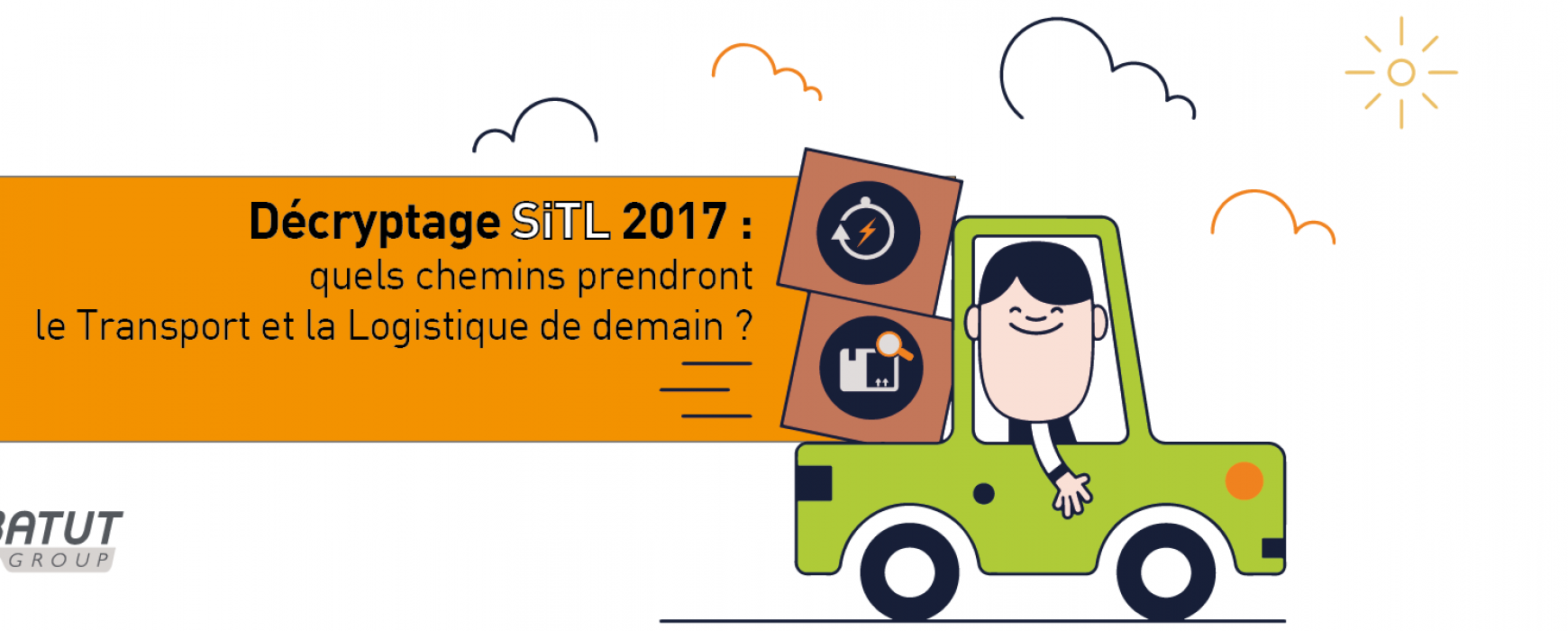[ARTICLE] From March 14 to 16, 2017, the Semaine Internationale du Transport et de la Logistique was held in Paris. As it does every year, this gathering of professionals provides an opportunity to discover developments in this particularly fast-moving sector. If you were absent, we look back at the key ideas discussed at this edition of SITL.
"By 2020, the autonomous truck will become normality"
Even if you didn't attend the show, you're bound to be aware of some of the trends emerging in the transport and logistics sector. Drones, robots, autonomous vehicles - where do we stand? At the time of writing, new players are certainly emerging. Among the most talked-about projects are DAIMLER's autonomous truck and OTTO's autonomous truck. Dream or reality? By 2020, this type of truck could well become the norm, according to some speakers. However, there are still a number of hurdles to overcome for these vehicles: additional cost, regulations, performance, etc. It is possible to imagine these trucks driving on specific stretches of road, with a driver on board to take over for the last few kilometers, or completely remote-controlled. This would reduce fuel consumption and increase safety.
"The explosion of e-commerce has led to a 15-20% increase in parcels in the city."
Automation also concerns the delivery of goods to the consumer: urban delivery. The explosion in e-commerce has led to a 15-20% increase in the number of parcels delivered to cities. This means more vehicles, more congestion and more pollution. The first/last mile market is a hotbed of experimentation. Consignments, robots, drones, collaborative deliveries, in electric or NGV vehicles, by bike or on foot - startups are competing in ingenuity. Will we soon see Amazon or UPS drones delivering parcels or Starship robots criss-crossing our sidewalks? The right balance has yet to be found, but it's already happening.
"Blockchain makes its appearance in the supply chain".
Digitalization is contributing to the information revolution (data), and is having a direct impact on logistics. Tomorrow's challenge will be to master this data and use it to improve performance. This will be particularly true in warehouses, where automation and robotization are gradually taking over the supply chain. Since 2008, Blockchain has been making its appearance in the banking world, and is slowly but surely arriving in the supply chain. This new technology for managing exchanges and information is set to streamline processes. By pooling and decentralizing information in "blocks", the various players will be able to access secure data. Blockchain could, for example, be used to improve food traceability.
"4000 jobs remain unfilled in transport and logistics".
Another key factor, mentioned at SITL and experienced by most carriers and logisticians, is the scarcity of applicants (see The 5 determining factors for employment in logistics). Even if Amazon has put the spotlight on logistics, this sector often remains in the shadows and doesn't appeal to the elite. That's why there are still 4,000 unfilled jobs in transport and logistics. Experienced, specialized profiles are hard to find. This situation will become even more acute with the rise of robotization and automation in the sector, which will give rise to new professions requiring a high degree of specialization. The France Logistique 2025 strategy is designed to support employee training and skills development. Some of the sector's major players, such as XPO, have set up a training center dedicated to logistics, to compensate for this shortage of specific, qualified manpower. At the same time, the employee's social model is being challenged by a real need for flexibility and independence, as Stuart points out.
"Electric or CNG vehicles can considerably reduce CO2 emissions, but also noise pollution."
The final challenge facing tomorrow's transport and logistics is the environment. Even if many players have become aware of their role, we need to redouble our efforts to limit the impact of our activities on the planet. In Transport, clean vehicles are finding their place in urban distribution. This is particularly true of Labatut Group's Vert chez Vous entity, which delivers to cities with its 100% clean fleet. This type of vehicle, whether electric or CNG-powered, considerably reduces both CO2 emissions and noise pollution. Given the still high cost of these vehicles, alternatives are emerging, notably with the Carwatt company, which is part of the circular economy by transforming combustion-powered vehicles into electric ones. Deliveries by bike, on foot or with autonomous carts are the bet of several startups to reduce pollution and gain in speed and agility. Others are opting for multimodal solutions, juggling road, rail and sea freight. In logistics, too, action is on the increase. In addition to essential efforts such as switching to LED lighting, one virtuous approach consists in rehabilitating (and sometimes depolluting) derelict land to create new, more environmentally-friendly and sustainable logistics areas. Especially since these storage areas, sometimes multi-storey, are becoming XXL (up to 200,000m2).
As mentioned at this SILT, the new delivery address is the Planet. The pace is also quickening on the demand side, which demands greater responsiveness and speed of delivery. And no one can ignore the importance of the customer experience. The need to exchange and transport will endure, but in the face of an increasingly complex world and a changing market, the advice given to large companies is to demonstrate agility, anticipation and experimentation, particularly alongside innovative startups.







